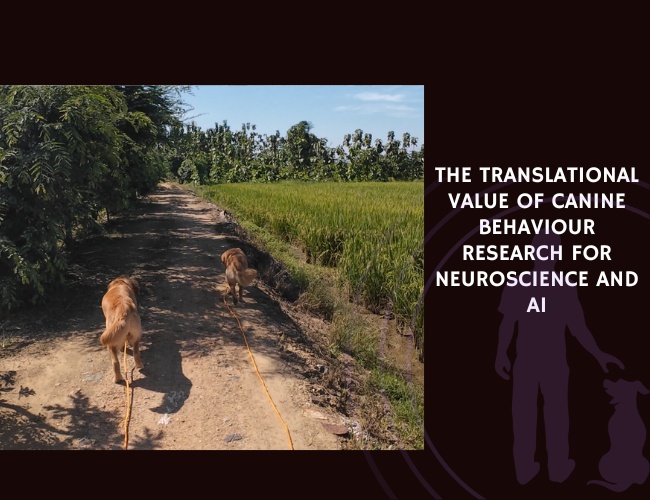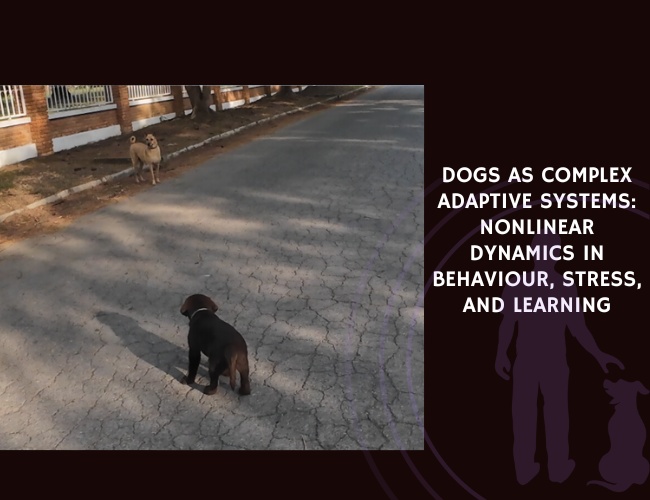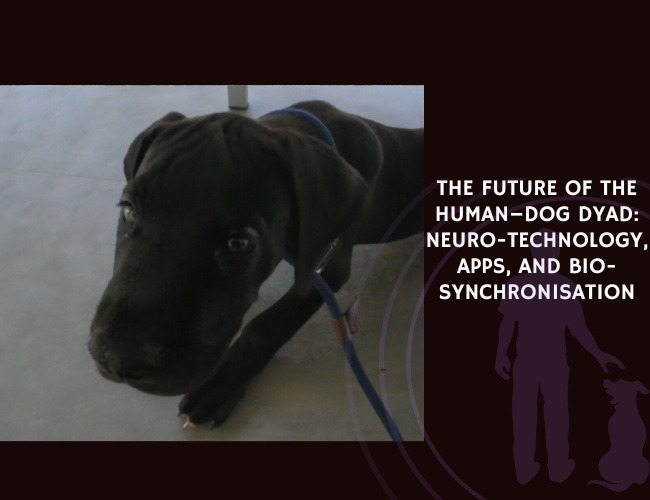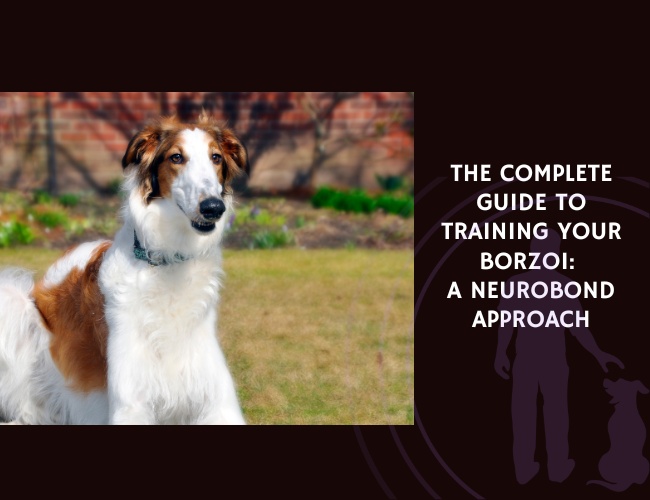Introduction: Why Your Dog’s Mind Matters More Than You Think
Have you ever watched your furry friend anticipate your morning routine, seemingly reading your mind before you’ve even reached for the leash? This remarkable ability isn’t just endearing—it represents a goldmine of scientific insight that’s revolutionizing our understanding of both human cognition and artificial intelligence. The domestic dog (Canis familiaris) has emerged as an unexpected hero in translational neuroscience, offering researchers a unique window into the complexities of social cognition, learning mechanisms, and emotional processing that directly inform both human healthcare and AI development.
For centuries, we’ve shared our homes and hearts with dogs, but only recently have scientists begun to appreciate the profound implications of this interspecies bond. Your dog’s ability to synchronize with your emotions, learn from subtle cues, and adapt to complex social situations makes them not just beloved companions, but sophisticated biological models that bridge the gap between laboratory research and real-world applications. This journey into canine cognition reveals how studying our four-legged friends is helping us understand everything from autism spectrum disorders to the development of more intuitive artificial intelligence systems.
Let us guide you through this fascinating intersection of ethology, neuroscience, and computer science—where every tail wag tells a story, and every learned behavior illuminates pathways to understanding the mind itself. 🧠
Dogs as Natural Neuroscientists: Understanding the Social Brain
The Canine Window into Human Neuropsychiatric Conditions
When researchers seek to understand complex human conditions like autism spectrum disorder (ASD), they face a fundamental challenge: finding an appropriate model that exhibits relevant behaviors (what scientists call “face validity”) while possessing similar biological mechanisms. This is where your dog’s remarkable social intelligence becomes invaluable. Unlike traditional laboratory rodents, dogs demonstrate an extraordinary range of social cognitive abilities that mirror human variability—from the highly socially attuned therapy dog to the more aloof, independent breeds.
Did you know that the phenotypic similarities between canine and human social symptoms are considerably higher than those between rodents and humans? This means that when your Labrador struggles to read social cues or your Border Collie obsessively focuses on specific patterns, these behaviors provide functionally analogous insights into human neuropsychiatric conditions. The inter-individual variability we observe in dogs—just like the differences you might notice between your neighbor’s gregarious Golden Retriever and your more reserved Shiba Inu—offers researchers a naturalistic spectrum of social cognitive phenotypes that closely parallels human diversity.
This translational value extends beyond mere observation. Dogs likely share similar etiological mechanisms with humans for certain conditions, meaning the underlying biological causes may be remarkably similar. When scientists study how your dog processes social information, forms attachments, or responds to emotional cues, they’re not just learning about canine behavior—they’re uncovering fundamental principles of social cognition that apply across species.
Empathy, Attachment, and the Emotional Lives of Dogs
Every dog owner has experienced that moment when their furry friend seems to sense their sadness, offering a gentle paw or a comforting nuzzle. This isn’t just anthropomorphism—it’s a manifestation of genuine emotional resonance that scientists are now studying intensively. The strong bond between you and your dog, often strengthened through training and daily interaction, provides researchers with a living laboratory for understanding empathy and emotional contagion.
Your dog’s ability to synchronize with your stress levels, mirror your excitement, or respond to your emotional state represents a sophisticated form of social cognition. This emotional attunement isn’t accidental—it’s the product of thousands of years of co-evolution that has created a unique interspecies relationship. When researchers observe how dogs recognize human emotions, interpret facial expressions, and adjust their behavior accordingly, they’re gathering crucial data about the neural mechanisms underlying empathy itself.
The implications are profound. By understanding how dogs form attachments—from the anxious behaviors of separation anxiety to the secure bonds of well-adjusted pets—scientists gain insights into attachment theory that can inform human psychology and psychiatric treatment. Your dog’s emotional world, far from being simple or primitive, reveals complex cognitive processes that illuminate our understanding of social bonding across species. 🐾
Comparative Brain Architecture: More Similar Than You’d Think
While your dog’s brain is obviously smaller than yours, the fundamental structures involved in emotion, memory, and social processing show remarkable similarities. The canine brain contains analogous structures to the human prefrontal cortex (involved in decision-making and social behavior), amygdala (processing emotions and fear responses), and hippocampus (critical for memory formation). This structural similarity isn’t just anatomical trivia—it means that when we study how these regions function in dogs, we’re gaining translatable insights into human neurobiology.
Recent advances in veterinary geroscience have revealed that dogs experience aging processes at the cellular and molecular level that closely mirror human aging. When your senior dog shows signs of cognitive decline or memory issues, these changes reflect similar mechanisms to human neurodegenerative conditions. This parallel extends to the manifestations in brain tissue, making dogs valuable models for understanding not just healthy cognition, but also age-related cognitive changes and potential interventions.
Learning and Decision-Making: How Your Dog’s Mind Works
Reinforcement Schedules and Error Correction: The Canine Learning Laboratory
Every time you train your dog—whether teaching a simple “sit” or a complex agility routine—you’re participating in a real-world demonstration of learning principles that directly inform both neuroscience and artificial intelligence development. Your dog’s brain employs sophisticated error correction mechanisms, constantly updating its predictions about which behaviors lead to rewards and which don’t. This process mirrors what computational neuroscientists call the “active inference framework,” where the brain minimizes discrepancies between expected and actual outcomes.
Think about how your dog learns to distinguish between the sound of you grabbing their leash (walk time!) versus the sound of you grabbing your car keys (you’re leaving without them). This discrimination involves complex neural processes of prediction, error detection, and behavioral adjustment. The brain tracks what researchers call “free energy”—essentially the difference between what your dog expects to happen and what actually occurs. When there’s a mismatch, learning happens.
This learning process in dogs provides invaluable data for developing AI systems. Just as your dog adjusts their behavior based on reinforcement schedules (treats for good behavior, no reward for jumping), AI algorithms can be designed to optimize their responses through similar feedback mechanisms. The beauty of studying canine learning is that it occurs in naturalistic, complex environments—far more representative of real-world conditions than controlled laboratory settings.
Predictive Coding and Anticipation in Your Dog’s Daily Life
Have you noticed how your dog seems to know it’s dinner time before you even glance at the clock? Or how they position themselves by the door moments before your usual arrival time? This anticipatory behavior demonstrates predictive coding—your dog’s brain is constantly generating predictions about future events based on past patterns. This isn’t simple conditioning; it’s a sophisticated cognitive process where the brain maintains and updates complex models of the environment.
Your dog’s emotional experiences emerge naturally from this predictive process. When their predictions are accurate (you do arrive home at 5:30 PM), they experience positive affect. When predictions fail (you’re late due to traffic), you might observe anxiety or restlessness. This emotional dimension of predictive coding provides researchers with observable, measurable outcomes that can inform our understanding of how brains—both biological and artificial—handle uncertainty and adapt to changing circumstances.
The implications for AI development are significant. By studying how dogs anticipate events, form expectations, and adjust when those expectations aren’t met, researchers can design more robust AI systems capable of handling the unpredictability of real-world environments. Your dog’s ability to generalize from specific experiences (“the doorbell means visitors”) to broader contexts (“any loud bell might mean visitors”) offers a biological template for creating AI that can effectively transfer learning across different situations.
Memory Formation and Retrieval: More Than Just Tricks
When your dog remembers where they buried their favorite toy last week, or recognizes a friend they haven’t seen in months, they’re demonstrating sophisticated memory processes that go beyond simple association. Dogs possess what researchers call “episodic-like memory”—the ability to recall specific events, including what happened, where it occurred, and when. This type of memory was once thought to be uniquely human, but your dog’s ability to return to specific locations or remember complex sequences of events suggests otherwise.
Understanding how dogs form and retrieve memories has profound implications for both neuroscience and AI development. The way your dog’s brain consolidates short-term experiences into long-term memories, prioritizes important information, and retrieves relevant memories in appropriate contexts provides a biological blueprint for creating more efficient and context-aware AI memory systems. Unlike current AI models that often struggle with memory management and contextual retrieval, dogs seamlessly integrate past experiences with present circumstances to guide behavior—exactly the kind of flexible, adaptive memory system that next-generation AI aims to achieve.

Dog-Human Interaction: A Living Laboratory of Social Cognition
Synchronization and Recognition: The Dance of Interspecies Communication
The moment you and your dog make eye contact, a remarkable synchronization begins. Your heart rates may align, your stress hormones fluctuate in tandem, and a complex exchange of social signals unfolds. This isn’t mere coincidence—it’s the result of thousands of years of co-evolution that has created an unparalleled model for studying social cognition. Your dog’s ability to read your facial expressions, interpret your tone of voice, and respond to subtle body language provides researchers with a naturalistic laboratory for understanding how social information is processed and acted upon.
When you point at something, your dog follows your gaze—a seemingly simple behavior that actually requires sophisticated cognitive processing. This joint attention capability is rarely seen in other species, even our closest primate relatives. Your dog must understand that your gesture has communicative intent, that it refers to something in the environment, and that attending to it might be beneficial. This complex social reasoning develops naturally in dogs through their interactions with humans, offering insights into how social cognitive abilities emerge and function.
The synchronization observed between dogs and their owners extends beyond behavior to physiological states. Studies have shown that when you’re stressed, your dog’s cortisol levels rise; when you’re calm, they relax. This biological mirroring provides a measurable, objective window into emotional contagion and empathy—phenomena that are notoriously difficult to study in controlled laboratory settings. Every walk you take with your dog generates data about how two different species can achieve remarkable levels of social coordination and mutual understanding.
Implications for Understanding Human Conditions
The dog-human bond offers unique insights into conditions like autism spectrum disorder, attachment disorders, and social anxiety. When researchers observe how dogs with different temperaments interact with humans—from the socially exuberant Golden Retriever to the more reserved Afghan Hound—they’re seeing a natural spectrum that parallels human social diversity. This variability isn’t a complication; it’s a feature that makes dogs invaluable for understanding the full range of social cognitive abilities and challenges.
Your dog’s attachment to you provides a living model of attachment theory. Secure dogs explore confidently, knowing you’re their safe base. Anxiously attached dogs might show excessive clinginess or separation distress. These patterns mirror human attachment styles, offering researchers the opportunity to study attachment mechanisms in a species that shares our social environment but allows for more controlled observation and intervention.
The therapeutic value of the dog-human bond—evidenced in therapy dogs, emotional support animals, and service dogs—demonstrates the practical applications of this research. When a child with autism connects with a therapy dog in ways they struggle to with humans, or when a veteran with PTSD finds comfort in their service dog’s presence, we’re witnessing the translational value of understanding interspecies social cognition. These real-world applications validate the importance of studying dog-human interaction as a window into fundamental aspects of social connection and emotional regulation. 🧡
Applications for Artificial Intelligence: Learning from Canine Intelligence
Problem-Solving and Reinforcement Learning: Natural Algorithms in Action
Watch your dog figure out how to open a gate or retrieve a ball from under the couch, and you’re observing problem-solving strategies that can directly inform AI algorithm development. Unlike current AI systems that often require thousands of training examples to learn a task, your dog can often solve novel problems with just a few attempts. This efficiency stems from their ability to combine different types of learning—trial and error, observation, and insight—in flexible ways that current AI systems struggle to replicate.
Your dog’s approach to problem-solving involves what researchers call “reinforcement learning with exploration.” They don’t just repeat successful behaviors; they actively explore variations, test boundaries, and discover creative solutions. When your Border Collie figures out that bringing you their leash increases the likelihood of a walk, or your Beagle learns to manipulate different puzzle feeders, they’re demonstrating adaptive learning strategies that balance exploitation of known rewards with exploration of new possibilities.
The way dogs handle partial reinforcement—where rewards are intermittent rather than consistent—provides crucial insights for developing more robust AI systems. Your dog doesn’t give up when every behavior isn’t immediately rewarded; instead, they maintain behavioral flexibility and persistence. This resilience in the face of uncertain outcomes is exactly what AI researchers aim to achieve in creating systems that can operate effectively in unpredictable real-world environments.
Error Tolerance, Adaptability, and Generalization
One of the most remarkable aspects of canine cognition is their ability to generalize learning across contexts while maintaining behavioral flexibility. When your dog learns that “sit” means the same thing whether you’re in the kitchen, at the park, or at the vet’s office, they’re demonstrating a form of generalization that current AI systems find challenging. This isn’t just simple transfer learning—it involves understanding the abstract concept beneath the specific instances.
Your dog’s error tolerance is equally instructive. When they make a mistake—perhaps bringing you the wrong toy or misreading a social cue—they don’t catastrophically fail like many AI systems might. Instead, they adjust, try again, and incorporate the error into their learning process. This graceful handling of mistakes, combined with the ability to recover and continue functioning, provides a biological template for creating more resilient AI systems.
The adaptability dogs show when faced with novel situations offers lessons for AI development. Whether navigating a new environment, meeting unfamiliar people, or encountering unexpected obstacles, dogs draw on their past experiences while remaining flexibly responsive to new information. They don’t simply apply rigid rules but instead demonstrate what researchers call “adaptive intelligence”—the ability to modify behavior based on context while maintaining goal-directed behavior.
Dog-Human Communication as a Model for Human-Robot Interaction
The intuitive communication between you and your dog provides a powerful model for developing more natural human-robot interaction frameworks. Your dog doesn’t need explicit programming to understand that your tone of voice, body posture, and facial expression all carry meaning. They integrate these multimodal signals naturally, creating a rich communicative exchange that feels effortless despite its underlying complexity.
Consider how your dog adjusts their communication style based on your responses. If whining doesn’t get your attention, they might try pawing. If barking at the door doesn’t result in being let out, they might bring you their leash instead. This adaptive communication strategy—where the method adjusts based on effectiveness—offers insights for creating AI systems that can flexibly modify their interaction styles based on user responses and preferences.
The emotional dimension of dog-human communication is particularly relevant for AI development. Your dog doesn’t just exchange information; they build rapport, express affection, and maintain social bonds through their interactions. As AI systems increasingly aim to serve as companions, assistants, and collaborators, understanding how dogs achieve this emotional connection with humans becomes invaluable. The success of therapy dogs and service animals demonstrates that effective support isn’t just about task completion—it’s about providing emotionally attuned, socially aware assistance that enhances human wellbeing. 😄
Bridging. Learning. Evolving.
Dogs reveal cognition. Their social intelligence and emotional attunement provide living models for neuroscience, surpassing rodents in relevance to human behaviour and mental health.
Emotions cross species. From empathy to attachment, dogs mirror our psychological patterns, offering translational insight into conditions like anxiety, autism, and depression.



AI learns from canines. By decoding how dogs predict, adapt, and connect, researchers shape more intuitive artificial intelligence—melding biology, compassion, and technology.
Comparative Advantages: Why Dogs Excel as Research Models
Ethical and Practical Considerations in Modern Research
The use of dogs in translational research presents unique ethical considerations that actually enhance rather than hinder their scientific value. Unlike purpose-bred laboratory animals, many canine studies involve pet dogs living in home environments, participating voluntarily (with their owners’ consent) in non-invasive research. This approach aligns with the “3R principles” of animal research—replacement, reduction, and refinement—while providing data from animals living in naturalistic conditions that closely mirror the complexity of human environments.
Your dog’s larger size compared to traditional laboratory animals like mice offers practical advantages for certain types of research. Neuroimaging studies, for instance, can achieve better resolution in dog brains than in smaller animals. Dental research benefits from dogs’ tooth morphology, which more closely resembles human teeth than rodent teeth do. These practical advantages, combined with the ability to study dogs non-invasively using techniques like functional MRI with awake, unrestrained animals, make them valuable research partners rather than merely research subjects.
The public perception of dogs as sentient, emotionally complex beings has actually driven innovations in research methodology. Scientists studying dogs have developed creative, welfare-positive approaches like training dogs to voluntarily participate in brain scans, using play-based cognitive testing, and conducting studies in home environments. These methodologies not only respect the welfare of the animals but often yield more ecologically valid data than traditional laboratory approaches.
The Unique Co-evolutionary Partnership
No other animal shares the depth of co-evolutionary history that dogs have with humans. This 15,000+ year partnership has created biological and behavioral adaptations that make dogs uniquely suited for translational research. Your dog’s ability to read human social cues isn’t just learned—it’s partially innate, with puppies as young as eight weeks showing preferences for human faces and responding to human social signals.
This co-evolutionary history means that dogs have developed in the human social environment, facing similar selective pressures and adapting to similar challenges. When your dog navigates the complex social dynamics of a dog park or adjusts their behavior based on different family members’ preferences, they’re demonstrating cognitive flexibility that evolved specifically within human society. This makes them particularly relevant models for understanding human social cognition and its disorders.
The bidirectional nature of dog-human co-evolution—where both species have adapted to each other—creates a unique research opportunity. Dogs haven’t just adapted to understand humans; humans have also evolved to communicate with dogs. This mutual adaptation provides insights into the fundamental principles of social communication, cooperation, and bonding that transcend species boundaries.
Future Frontiers: Where Canine Research Meets Tomorrow’s Technology
Neuroimaging in Awake, Unrestrained Dogs: A Window into Natural Cognition
The future of canine neuroscience lies in studying dogs behaving naturally while we observe their brain activity in real-time. Imagine your dog playing fetch while wearing a lightweight, wireless EEG cap, or choosing between different toys while functional near-infrared spectroscopy (fNIRS) monitors their prefrontal cortex activity. These emerging technologies promise to reveal how the canine brain processes information during natural behaviors, providing insights impossible to obtain from restrained or sedated animals.
Advanced neuroimaging techniques adapted for awake, cooperating dogs are already yielding remarkable findings. Dogs can be trained to remain still in MRI scanners voluntarily, allowing researchers to study their brain responses to various stimuli—from their owner’s voice to images of different facial expressions. This approach respects animal welfare while generating unprecedented data about conscious, emotional, and cognitive processing in a non-human species that shares our social environment.
The integration of multiple neuroimaging modalities—combining fMRI for spatial resolution with EEG for temporal precision—promises to reveal the dynamic interplay of different brain regions during complex behaviors. When your dog decides whether to approach a stranger or recognizes a familiar word, these technologies can capture the millisecond-by-millisecond neural cascades underlying these decisions, providing templates for understanding similar processes in humans and designing more brain-like AI systems.
AI-Powered Behavioral Analysis: Big Data Meets Canine Science
The explosion of wearable technology for dogs—from GPS trackers to activity monitors—is generating vast datasets about canine behavior in natural settings. Your dog’s daily activity patterns, sleep cycles, and social interactions can now be continuously monitored and analyzed using sophisticated AI algorithms. This wealth of data promises to reveal patterns invisible to human observers, from subtle early indicators of health issues to complex social dynamics in multi-dog households.
Machine learning algorithms can now analyze thousands of hours of video footage to identify and categorize canine behaviors with superhuman accuracy and consistency. These AI systems can detect micro-expressions, track gaze patterns, and identify behavioral sequences that might indicate stress, pain, or cognitive changes. When combined with physiological data from wearable sensors, these behavioral analyses create comprehensive pictures of canine wellbeing that can inform both veterinary medicine and translational research.
The development of AI-driven behavioral simulations based on canine datasets represents a fascinating frontier. By training AI models on the problem-solving strategies, social interactions, and learning patterns of real dogs, researchers can create virtual agents that behave in dog-like ways. These simulations can be used to test hypotheses about canine cognition, predict how dogs might respond to novel situations, and even design better training programs and enrichment strategies.
Integration of Disciplines: The One Health/One Mind Framework
The future of canine research lies not in any single discipline but in the integration of ethology, neurobiology, computer science, and veterinary medicine. This interdisciplinary approach, exemplified by the One Health/One Mind framework, recognizes that human, animal, and environmental health are inextricably linked. Your dog’s mental and physical health directly impacts your own wellbeing, and understanding this bidirectional relationship requires expertise from multiple fields.
Consider how studying age-related cognitive decline in senior dogs simultaneously advances veterinary medicine, provides models for human Alzheimer’s research, and informs the development of AI systems that can adapt to degraded performance—a crucial capability for long-term autonomous systems. This convergence of applications demonstrates why interdisciplinary collaboration isn’t just beneficial but essential for maximizing the impact of canine research.
The integration of citizen science into canine research represents another exciting frontier. Dog owners worldwide can contribute data through smartphone apps, participating in large-scale studies of canine behavior, cognition, and health. This democratization of research not only generates unprecedented sample sizes but also ensures that findings are relevant to dogs living in diverse environments and cultures, enhancing the generalizability and translational value of the research. 🐾
Practical Implications: From Research to Real-World Applications
Transforming Veterinary Medicine and Animal Welfare
The insights gained from canine behavioral and neuroscience research are revolutionizing veterinary practice and animal welfare standards. Understanding the neural basis of anxiety in dogs has led to more effective treatments for separation anxiety and noise phobias. Your veterinarian’s ability to recognize signs of cognitive dysfunction in aging dogs, prescribe appropriate interventions, and monitor treatment effectiveness all stem from translational research that bridges human and veterinary medicine.
Behavioral medicine for dogs has evolved from simple training techniques to sophisticated interventions based on neuroscientific principles. When your dog receives behavior modification therapy for aggression or fear, the protocols used are informed by our understanding of the amygdala’s role in fear processing, the importance of predictive coding in learning, and the neuroplasticity that allows for behavioral change. These evidence-based approaches improve outcomes for dogs and their families while reducing the number of dogs surrendered to shelters due to behavioral issues.
The development of enrichment strategies for dogs in various settings—from homes to shelters to working dog programs—increasingly draws on cognitive science research. Understanding how dogs process information, what constitutes cognitive challenge versus stress, and how to promote positive mental states has led to innovations in toy design, training methods, and housing standards that enhance canine welfare based on scientific evidence rather than anthropomorphic assumptions.
Advancing Human Healthcare Through Canine Models
The translational value of canine research extends directly into human healthcare innovations. Dogs naturally develop many of the same diseases as humans—from cancer to diabetes to cognitive dysfunction—and studying these conditions in dogs provides insights that bridge the gap between laboratory models and human patients. When researchers develop a new treatment for canine osteosarcoma, they’re simultaneously advancing treatment options for human bone cancer patients.
The study of the dog-human bond has therapeutic applications that go beyond traditional medicine. Understanding how dogs provide emotional support, reduce stress, and facilitate social interaction has informed the development of animal-assisted interventions for everything from autism spectrum disorder to post-traumatic stress disorder. Your therapy dog’s ability to calm anxious hospital patients or help children with autism develop social skills isn’t just heartwarming—it’s based on measurable neurobiological effects that can be studied and optimized.
Comparative aging research in dogs is particularly promising for understanding and treating age-related cognitive decline in humans. Dogs age more rapidly than humans but show similar patterns of cognitive change, making them valuable models for testing interventions that might slow or prevent dementia. When your senior dog benefits from cognitive enrichment activities or dietary supplements that support brain health, they’re participating in research that could ultimately benefit human patients with Alzheimer’s disease.
Shaping the Future of Artificial Intelligence
The insights gained from studying canine cognition are already influencing AI development in profound ways. The concept of “embodied cognition”—the idea that intelligence emerges from the interaction between brain, body, and environment—has been powerfully demonstrated through canine research and is now shaping how roboticists design autonomous systems. Your dog’s ability to navigate complex physical and social environments using limited computational resources (compared to modern AI systems) provides a template for creating more efficient and adaptable artificial agents.
The development of social robots that can serve as companions for elderly or isolated individuals draws heavily on our understanding of dog-human bonds. By studying what makes dogs such effective companions—their responsiveness to human emotions, their ability to provide non-judgmental support, their capacity for forming attachments—engineers can design robots that provide similar benefits. While these robots may never fully replicate the depth of the dog-human bond, they can incorporate key features that make dogs such successful social partners.
The field of artificial emotional intelligence benefits enormously from canine research. Dogs demonstrate sophisticated emotional processing and regulation, from the excitement of anticipating a walk to the disappointment of a canceled play session. Understanding how dogs process and express emotions, how they recognize emotions in others, and how they use emotional information to guide behavior provides blueprints for creating AI systems that can engage in more naturalistic and emotionally appropriate interactions with humans.
Conclusion: Your Dog as a Bridge to Understanding Minds—Biological and Artificial
As we’ve explored throughout this journey, your dog is far more than a beloved pet—they’re a living link between the biological intelligence that emerged through evolution and the artificial intelligence we’re creating through technology. Every interaction you have with your dog generates insights that ripple outward, informing our understanding of neuroscience, advancing veterinary medicine, and inspiring the next generation of AI systems.
The remarkable convergence of canine behavior research, neuroscience, and artificial intelligence represents a paradigm shift in how we approach complex questions about mind, behavior, and intelligence. Your dog’s ability to learn from experience, adapt to new situations, form social bonds, and navigate the complex human world provides a naturalistic model that laboratory studies alone could never achieve. This makes every dog owner a potential participant in the grand project of understanding intelligence in all its forms.
Looking ahead, the integration of advanced technologies with ethological observation promises even deeper insights into the canine mind and its translational applications. As we develop new tools for studying dogs in their natural environments, create AI systems that can analyze vast amounts of behavioral data, and build interdisciplinary collaborations that span from veterinary medicine to computer science, we’re not just learning about dogs—we’re uncovering fundamental principles of cognition that transcend species boundaries.
The next time you watch your furry friend solve a problem, comfort you during stress, or simply enjoy your companionship, remember that you’re witnessing millions of years of evolution and thousands of years of co-evolution in action. These behaviors that seem so natural and effortless represent sophisticated cognitive processes that scientists are only beginning to understand and that may hold keys to advancing both human medicine and artificial intelligence.
Is this research right for your dog? If you’re interested in contributing to this exciting field, consider participating in citizen science projects, enrolling your dog in university research studies, or simply observing and documenting your dog’s behavior with fresh eyes. Every observation, every data point, and every insight brings us closer to understanding the remarkable minds we share our homes with—and through them, understanding ourselves and the intelligent systems we’re creating for the future. 🧠🐾
The bridge between biological and artificial intelligence isn’t built in sterile laboratories or abstract computer simulations—it’s wagging its tail in your living room, ready for its next walk, eager to show us what intelligence really means when it’s embedded in the messy, wonderful, complex world we all share together.









